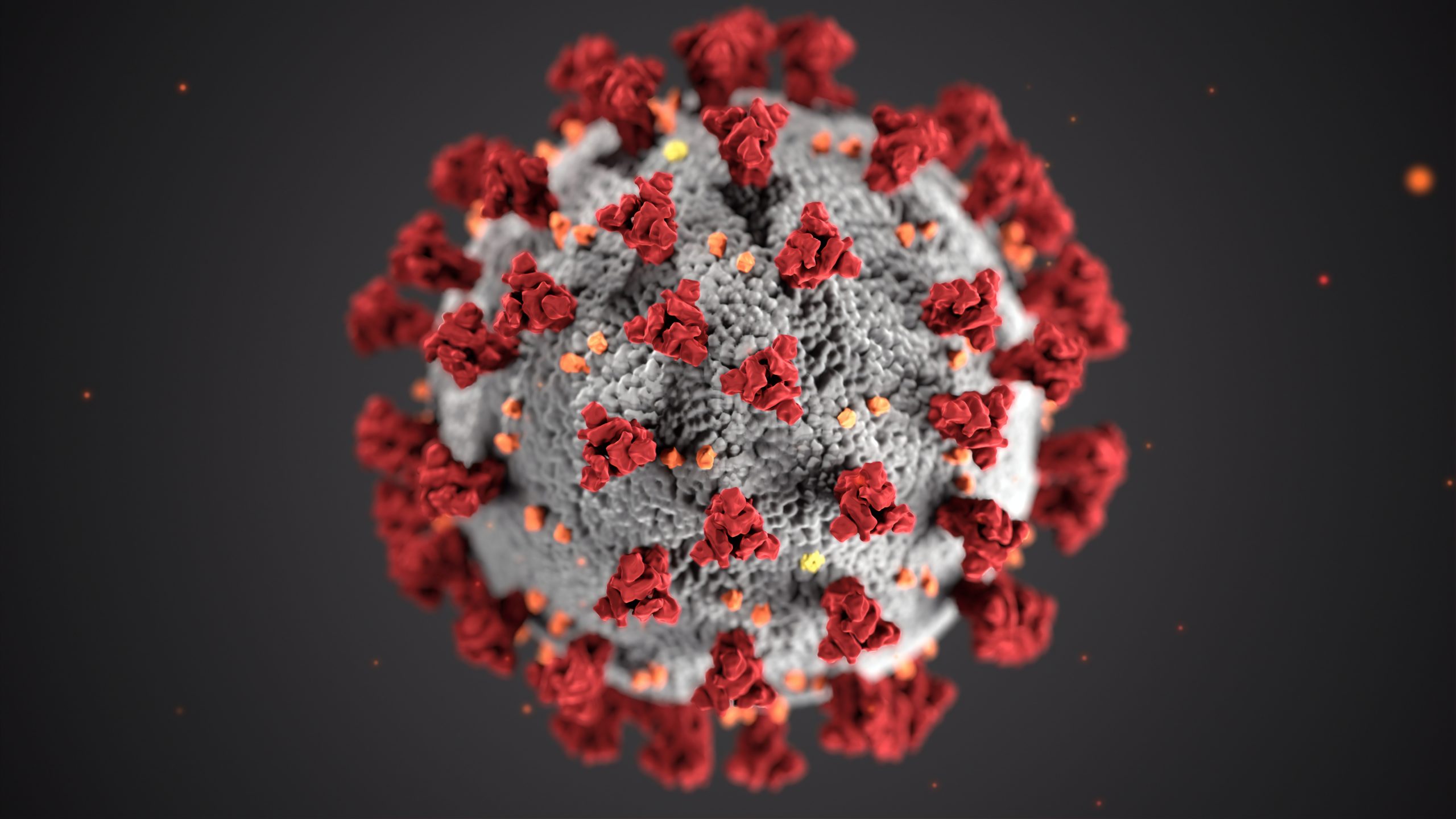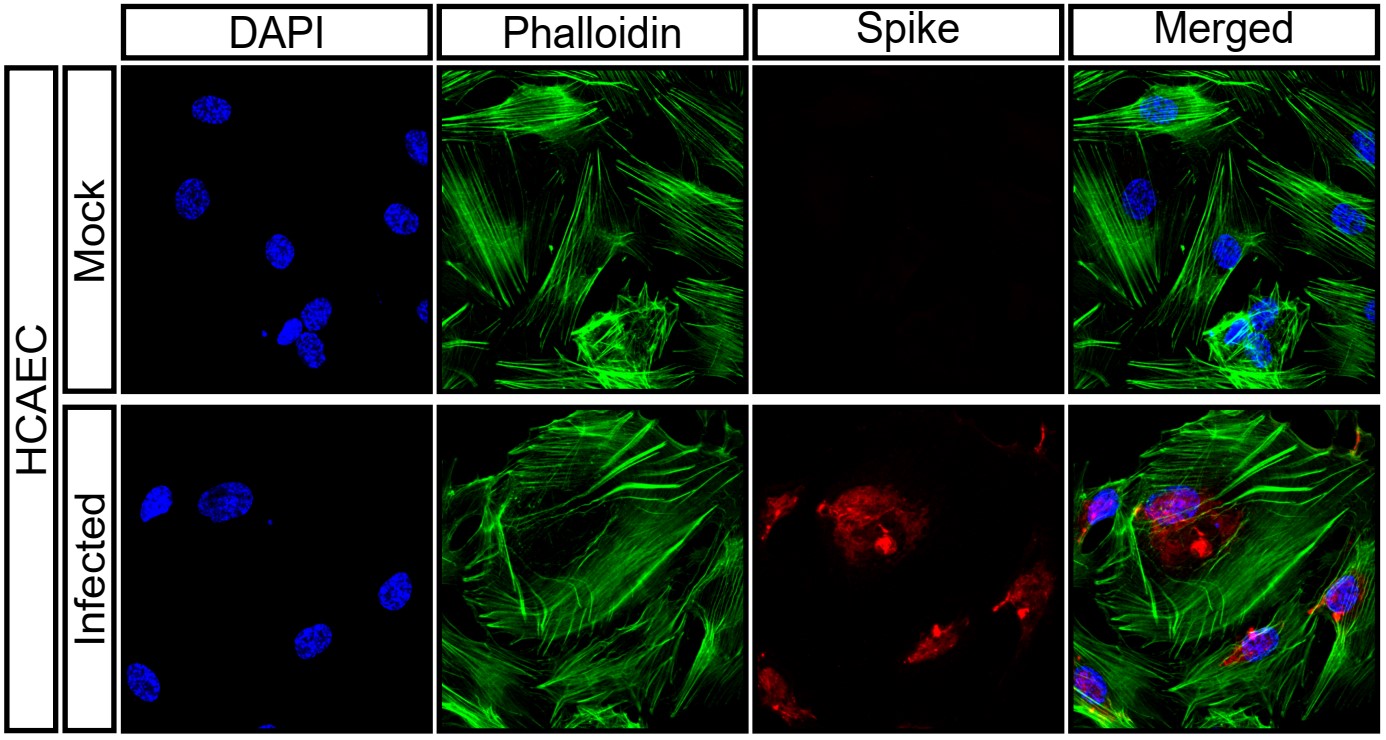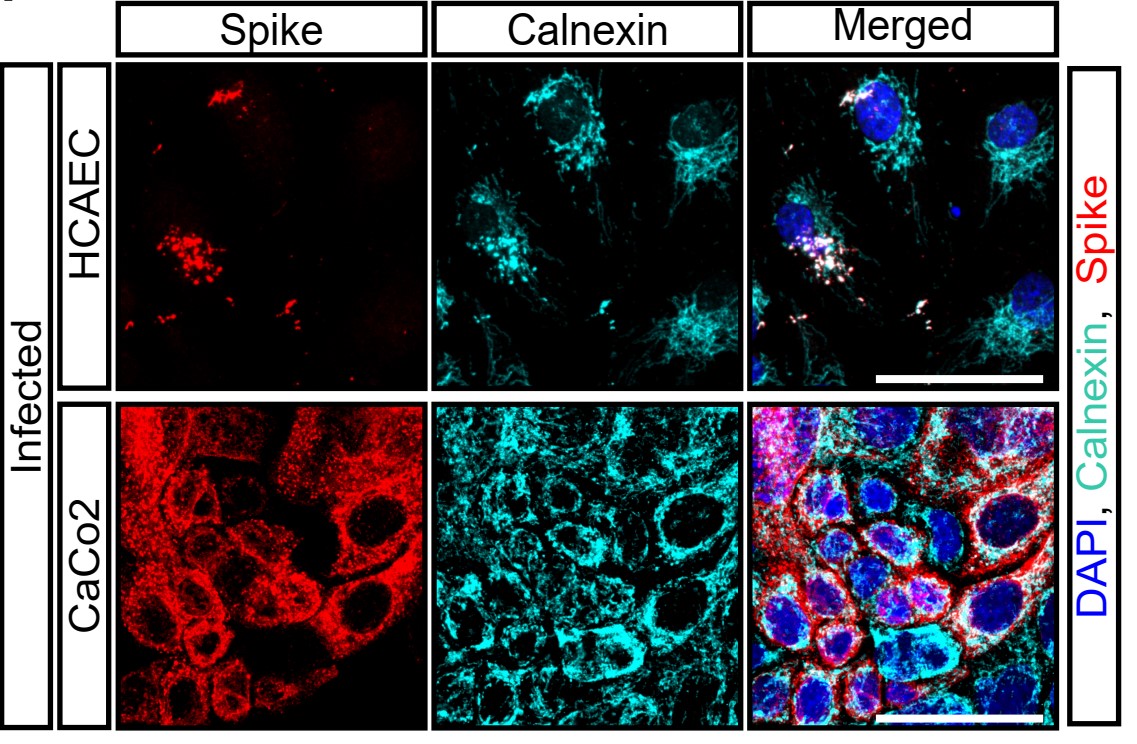Basic Research in Cardiology 2021:
Increased susceptibility of human endothelial cells to infections by SARS-CoV-2 variants.
COVID-19 and endothelial cells
An increasing body of evidences indicate that endothelial inflammation and dysfunction might be a major complication of COVID-19. Indeed, many COVID-19 patients suffer from pro-thrombotic events. However, whether these result from direct endothelial infections or are attributed indirectly to systematic inflammations is so for not known.

SARS-CoV-2 and endothelial cells from different vascular origins
To clarify this issue, Julian Wagner from the ICR and Denisa Bojkova from the virology department joined forces. Within a shared project, the authors infected endothelial cells from different vascular origins -including the heart, lungs and the umbilical cord- with SARS-CoV-2 isolates in vitro. Of the tested endothelial cells, only human coronary artery endothelial cells (HCAEC) were permissive for SARS-CoV-2, which was the only endothelial cell type that was positive for the SARS-CoV-2 entry receptor ACE2. Interestingly, the virus was neither replicated in nor released by HCAEC. It rather seemed that the virus was “trapped” in the endoplasmic reticulum of the host cells, as accessed histologically by calnexin staining as well as via ER-stress markers by RT-qPCR.


Infected HCAEC stained to visualize the nucleus (DAPI:blue), actin (Phalloidin: green) and the SARS-CoV-2 spike protein (red).Infected HCAEC and CaCo2 stained to visualize the nucleus (DAPI:blue), the ER (Calnexin:Cyan) and the SARS-CoV-2 spike protein (red).
SARS-CoV-2 and endothelial cells from different vascular origins
To clarify this issue, Julian Wagner from the ICR and Denisa Bojkova from the virology department joined forces. Within a shared project, the authors infected endothelial cells from different vascular origins -including the heart, lungs and the umbilical cord- with SARS-CoV-2 isolates in vitro. Of the tested endothelial cells, only human coronary artery endothelial cells (HCAEC) were permissive for SARS-CoV-2, which was the only endothelial cell type that was positive for the SARS-CoV-2 entry receptor ACE2. Interestingly, the virus was neither replicated in nor released by HCAEC. It rather seemed that the virus was “trapped” in the endoplasmic reticulum of the host cells, as accessed histologically by calnexin staining as well as via ER-stress markers by RT-qPCR.
Virus variants
Since the virus is constantly changing, the authors further incubated HCAEC with different virus variants, such as the alpha, beta and gamma variant. While the variants were found to be more infectious, replication and virus release were not observed.
In conclusion, the publication provides first insights in vascular events during SARS-CoV-2 infection, by showing that direct endothelial infection might be dependent of the vascular bed. However, whether the direct infection affects endothelial function needs to be further investigated.
Original publication: Wagner JUG, Bojkova D, Shumliakivska M, Luxán G, Nicin L, Aslan GS, Milting H, Kandler JD, Dendorfer A, Heumueller AW, Fleming I, Bibli SI, Jakobi T, Dieterich C, Zeiher AM, Ciesek S, Cinatl J, Dimmeler S. Increased susceptibility of human endothelial cells to infections by SARS-CoV-2 variants. Basic Res Cardiol. 2021 Jul 5;116(1):42. doi: 10.1007/s00395-021-00882-8. PMID: 34224022.
